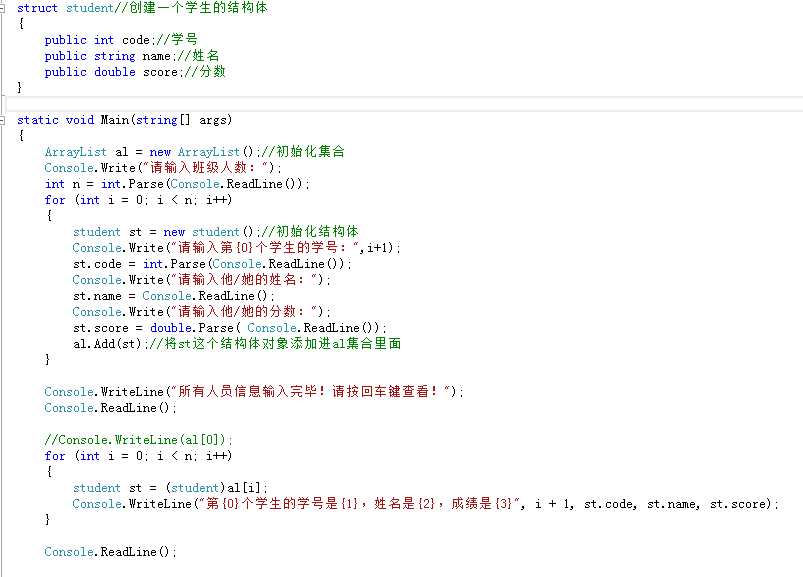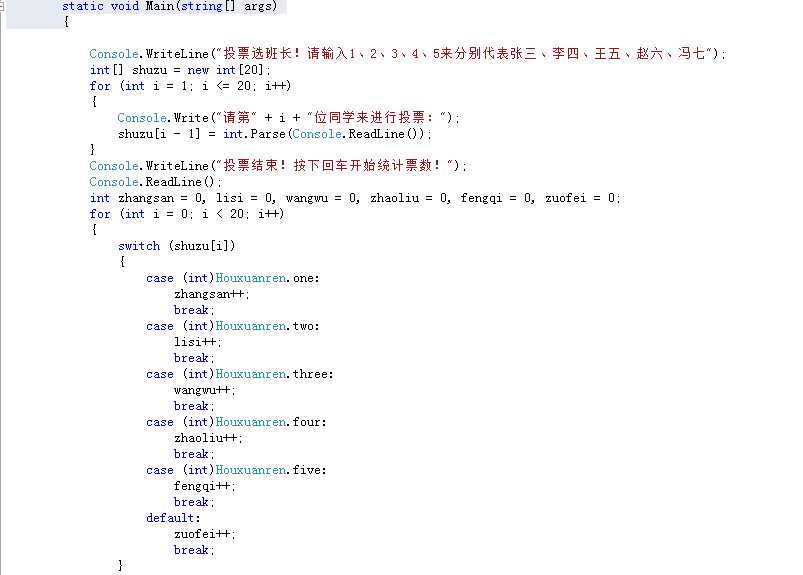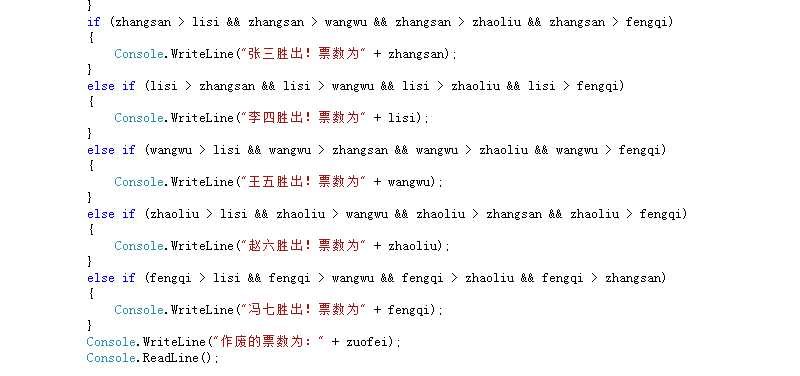标签:
结构体:就是一个自定义的集合,里面可以放各种类型的元素,用法大体跟集合一样。
一、定义的方法:
struct student
{
public int nianling;
public int fenshu;
public string name;
public string sex;
public int sum;
}
以上的语句就是定义一个名称为student的结构体,其中包含int类型的年龄、分数、总和,和string类型的姓名、性别。
二、用法:
在main主函数外面定义了一个名称为student的结构体,以便于main函数之中使用。
student st = new student();//这句话是在main函数之中定义了一个名为st的student类型的结构体。
下面开始为里面的每个元素赋值:(结构体名+点+结构体里面的变量名称=值)
main函数下
{
st.nianling=22;
st.fenshu=80;
st.name="小李";
}
赋值完成之后可以打印出被赋值的项。
三、结构体类型里面包含结构体类型:
可以在此前的student的结构体中在定义一个结构体
public shuxing sx;//代表一个shuxing结构体变量组
}
public struct shuxing
{
public double tizhong;
public double shengao;
public int nianling;
public string hunfou;
}
这样就可以在用的时候省下再次初始化结构体。
上课内容:
public struct student//如果想让其他添加出来的类也能够使用此结构体,需要在前面加上public
{
public int nianling;//想让其他的类可以访问到其中的变量需要加上public
public string name;
public string sex;
public One qq;//可以结构体中包含另一个结构体
public string[] shuzu;//可以直接定义一个数组,但是没有开辟空间
}
public struct One
{
public string nb;
public string abc;
}
static void Main(string[] args)
{
#region
//为里面的每个元素赋值:(结构体名+点+结构体里面的变量名称=值)
student st = new student();//使用之前需要先初始化一下
st.name = "张三";//初始化出来的变量名可以看做一个类对象
st.nianling = 21;//类对象的名称是不能相同的
st.sex = "男";
st.name = "王五";
//使用的时候利用变量名点出来其中的变量进行使用
Console.WriteLine(st.name);
st.qq.abc="qsqs";//结构体中包含另一个结构体类型,可以直接点出来一以下的变量
st.shuzu = new string [9];//使用之前需要先开辟空间
st.shuzu[0] = "赵六";//数组元素赋值方式
student st1 = new student();//可以多次初始化类,注意不同的变量名
st1.name = "李四";
st1.nianling = 22;
st1.sex = "女";
#endregion
}

枚举类型:
1.枚举类型只针对字符串,对于索引,无意义
2.常量的集合,这些常量只能取值,不能赋值
3.用常量表示所引用的字符串,这样可以省去重复写入长字符串
练习:
20人投票,五个候选人,用switch case
投票的时候输入1,2,3,4,5
利用12345来确定是哪一个候选人得票
计算得票数
得票最高的胜出



标签:
原文地址:http://www.cnblogs.com/shi2172843/p/5635537.html